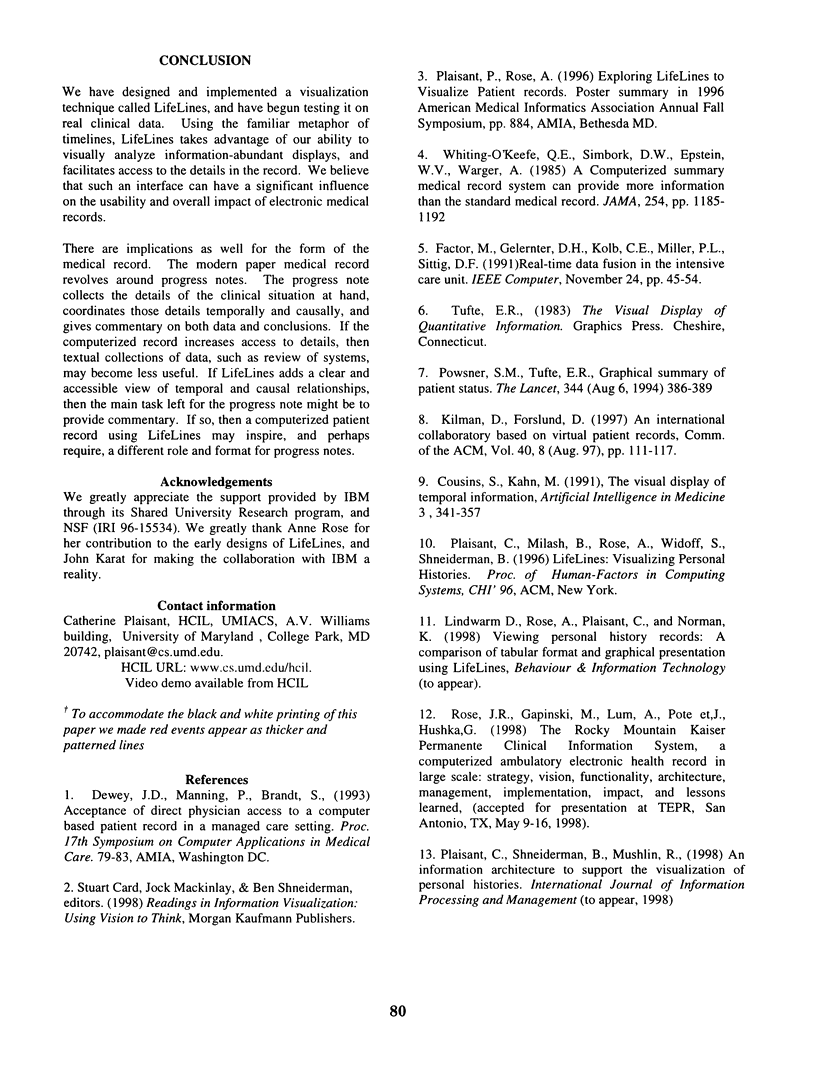Abstract
LifeLines provide a general visualization environment for personal histories. We explore its use for clinical patient records. A Java user interface is described, which presents a one-screen overview of a computerized patient record using timelines. Problems, diagnoses, test results or medications can be represented as dots or horizontal lines. Zooming provides more details; line color and thickness illustrate relationships or significance. The visual display acts as a giant menu, giving direct access to the data.
Full text
PDF




Images in this article
Selected References
These references are in PubMed. This may not be the complete list of references from this article.
- Dewey J. B., Manning P., Brandt S. Acceptance of direct physician access to a computer-based patient record in a managed care setting. Proc Annu Symp Comput Appl Med Care. 1993:79–83. [PMC free article] [PubMed] [Google Scholar]
- Powsner S. M., Tufte E. R. Graphical summary of patient status. Lancet. 1994 Aug 6;344(8919):386–389. doi: 10.1016/s0140-6736(94)91406-0. [DOI] [PubMed] [Google Scholar]
- Whiting-O'Keefe Q. E., Simborg D. W., Epstein W. V., Warger A. A computerized summary medical record system can provide more information than the standard medical record. JAMA. 1985 Sep 6;254(9):1185–1192. [PubMed] [Google Scholar]




